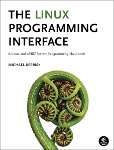|
HTML rendering created 2025-09-06 by Michael Kerrisk, author of The Linux Programming Interface. For details of in-depth Linux/UNIX system programming training courses that I teach, look here. Hosting by jambit GmbH. |

|
|
NAME | LIBRARY | SYNOPSIS | DESCRIPTION | RETURN VALUE | ERRORS | VERSIONS | STANDARDS | BUGS | COLOPHON |
|
|
|
cacheflush(2) System Calls Manual cacheflush(2)
cacheflush - flush contents of instruction and/or data cache
Standard C library (libc, -lc)
#include <sys/cachectl.h>
int cacheflush(int nbytes;
void addr[nbytes], int nbytes, int cache);
Note: On some architectures, there is no glibc wrapper for this
system call; see VERSIONS.
cacheflush() flushes the contents of the indicated cache(s) for
the user addresses in the range addr to (addr+nbytes-1). cache
may be one of:
ICACHE Flush the instruction cache.
DCACHE Write back to memory and invalidate the affected valid
cache lines.
BCACHE Same as (ICACHE|DCACHE).
cacheflush() returns 0 on success. On error, it returns -1 and
sets errno to indicate the error.
EFAULT Some or all of the address range addr to (addr+nbytes-1) is
not accessible.
EINVAL cache is not one of ICACHE, DCACHE, or BCACHE (but see
BUGS).
cacheflush() should not be used in programs intended to be
portable. On Linux, this call first appeared on the MIPS
architecture, but nowadays, Linux provides a cacheflush() system
call on some other architectures, but with different arguments.
Architecture-specific variants
glibc provides a wrapper for this system call, with the prototype
shown in SYNOPSIS, for the following architectures: ARC, CSKY,
MIPS, and NIOS2.
On some other architectures, Linux provides this system call, with
different arguments:
M68K:
int cacheflush(unsigned long addr, int scope, int cache,
unsigned long size);
SH:
int cacheflush(unsigned long addr, unsigned long size, int op);
NDS32:
int cacheflush(unsigned int start, unsigned int end, int cache);
On the above architectures, glibc does not provide a wrapper for
this system call; call it using syscall(2).
GCC alternative
Unless you need the finer grained control that this system call
provides, you probably want to use the GCC built-in function
__builtin___clear_cache(), which provides a portable interface
across platforms supported by GCC and compatible compilers:
void __builtin___clear_cache(void *begin, void *end);
On platforms that don't require instruction cache flushes,
__builtin___clear_cache() has no effect.
Note: On some GCC-compatible compilers, the prototype for this
built-in function uses char * instead of void * for the
parameters.
Historically, this system call was available on all MIPS UNIX
variants including RISC/os, IRIX, Ultrix, NetBSD, OpenBSD, and
FreeBSD (and also on some non-UNIX MIPS operating systems), so
that the existence of this call in MIPS operating systems is a de-
facto standard.
Linux kernels older than Linux 2.6.11 ignore the addr and nbytes
arguments, making this function fairly expensive. Therefore, the
whole cache is always flushed.
This function always behaves as if BCACHE has been passed for the
cache argument and does not do any error checking on the cache
argument.
This page is part of the man-pages (Linux kernel and C library
user-space interface documentation) project. Information about
the project can be found at
⟨https://www.kernel.org/doc/man-pages/⟩. If you have a bug report
for this manual page, see
⟨https://git.kernel.org/pub/scm/docs/man-pages/man-pages.git/tree/CONTRIBUTING⟩.
This page was obtained from the tarball man-pages-6.15.tar.gz
fetched from
⟨https://mirrors.edge.kernel.org/pub/linux/docs/man-pages/⟩ on
2025-08-11. If you discover any rendering problems in this HTML
version of the page, or you believe there is a better or more up-
to-date source for the page, or you have corrections or
improvements to the information in this COLOPHON (which is not
part of the original manual page), send a mail to
man-pages@man7.org
Linux man-pages 6.15 2025-06-28 cacheflush(2)
Pages that refer to this page: syscalls(2)